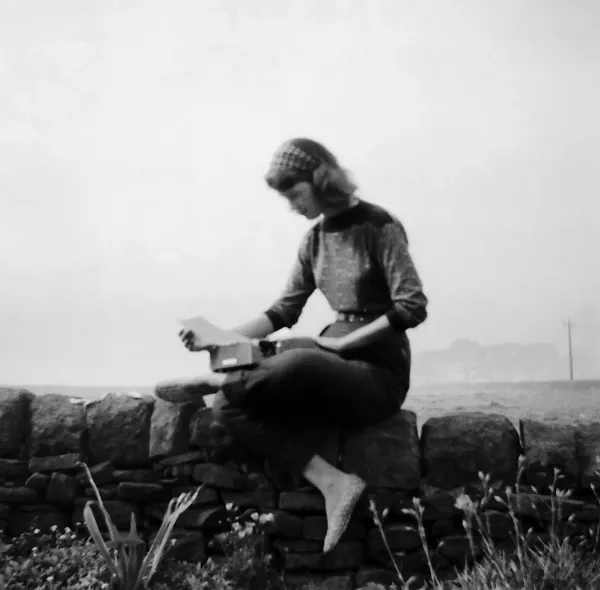Apparently Indian mythology has feminists too
Empowering or overpowering? Aditi comments on Kaikeyi, a feminist retelling of one of the most important Indian epics, the Ramayana.
This year, Diwali was coloured with Halloween. I say that not just because the two holidays fell on the same date, but because I picked up Vaishnavi Patel’s Kaikeyi: A Novel. Though not quite terrifying, Kaikeyi is somewhat mystical, and its faults with the feminist lens could be interpreted as borderline scary.
When I was younger, my mother would send me to Balvihar classes. Every Wednesday, she would drive me to an “Aunty’s” house where I would be educated on Indian mythology. The story that lasted the duration of my learnings was the Ramayana, a classical text full of parables associated with the morality of life and battle between good and evil.
Let me start off by saying, my comprehension of Kaikeyi was greatly aided by memories of my Balvihar lessons. The Ramayana is about Rama, a divine being born by the gift of the Gods, fated to triumph over evil. Rama’s destiny is stifled (or rather set on course) by his evil stepmother Kaikeyi, who convinces his father (her husband) King Dasharatha to exile Rama to the forest for 14 years. Kaikeyi is malicious and poisonous. She wants power for her bloodline, and therefore her own son Bharata to take the throne.
For those who don’t know the mythology, the lack of context could prove a tool of enjoyment, as the story can exist independently of its profundity, and thus can be appreciated by itself.
The premise of Kaikeyi is to revisit the Ramayana, aiming to rectify Kaikeyi’s maligned image by telling her side of the story. More than challenge the ‘evil stepmother’ stereotype drilled into those who studied the Ramayana (including myself), Patel also appears to tackle general stereotypes about women that ancient mythology may have also presented. Obligation to men, weakness and submissiveness: Patel wants us to know these have never, and will never, define women.
Central to the story is Kaikeyi’s magical ability that allows her to enter the “binding plane”, a place where she can visualise the strength of her connections with others. Depending on the magnitude of this connection, Kaikeyi is able to influence them. She develops this power throughout the book, eventually being able to view influences and connections between others as well. The gravity of her decisions is often quantified by their effects on the binding plane.
Though the use of the binding plane is clever, I am not sure how true to the original texts the idea of Kaikeyi’s magical powers are. It made the story feel overly fantastical at times, and almost took away from the significance of what Kaikeyi might have been able to achieve as a mere mortal.
The novel begins many years before the Ramayana starts. In the kingdom of Kekeya, Kaikeyi’s home, Patel’s exploration into Kaikeyi’s childhood defines the fundamental relationships that shaped her character. Essentially, Kaikeyi grows up in an environment that stifles women. Her only light comes from her twin, who sees Kaikeyi as his equal in spite of her gender, maids that tend to her like family, and her magical powers.
The novel peaks in its initial chapters. Patel does a wonderful job of illustrating Kaikeyi’s grit in navigating the boundaries of young women. However, Kaikeyi is suddenly revealed as petulant and ill-tempered. Despite having the binding plane, she cannot control a blind anger that makes her indifferent to severing bonds in the binding plane.
As the novel progresses, Kaikeyi appears to lose all the ground – power and development – that she has fought to gain. This happens over, and over.
The result is a dilution of Kaikeyi’s character. Although she is complex, Patel misses some fundamental nuance. Kaikeyi has many faces but no depth. Meaning, she flips between facets of personality, sometimes brave and pioneering, other times obstinate and turbulent. But she is never bad – every action has a justification.
A particularly poor justification is the way in which Patel skews other characters. Male imprudence towards women is explained as the teachings of the Gods. In fact, incarnations of Gods appear malevolent, particularly towards Kaikeyi. Rama – the hero of the Ramayana – is supposedly a misguided misogynist.
Despite being a feminist novel, Kaikeyi’s interactions with other women are facile and largely transient. She is quick to form opinions about and dismiss people, as she does with Dasharatha’s other wives, or really with anyone who holds a different opinion to her. They only win favour when in agreement with her.
These aspects made it feel as if Kaikeyi, more than anything else, suffered a victim complex. Knowing the story of the Ramayana only furthered my impression that Kaikeyi’s perspective was one of an unreliable narrator.
The concept of Kaikeyi is certainly interesting. Patel writes breezily, and it makes Kaikeyi a smooth read, but I feel missed she missed the chance to say something remarkable.
I suppose Patel did manage to change my opinion of Kaikeyi. I see she should not be scorned. My conflict, however, is in her character. In the end, all Kaikeyi fights for seems relinquished; far from the goals she promisingly begins the book with. The final picture of Kaikeyi is one of pity. And the ease with which Patel lacerates her protagonist might just be the inadvertent lesson she tries to teach us. That is a rather scary thought.










